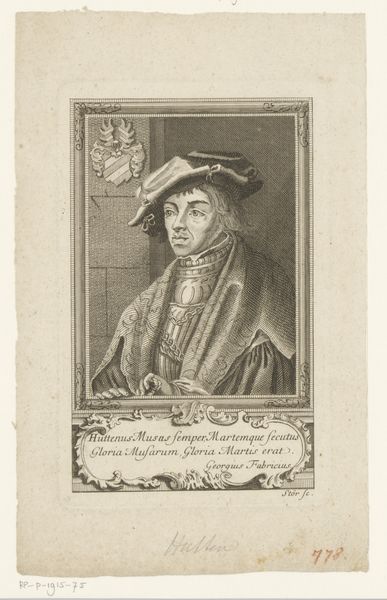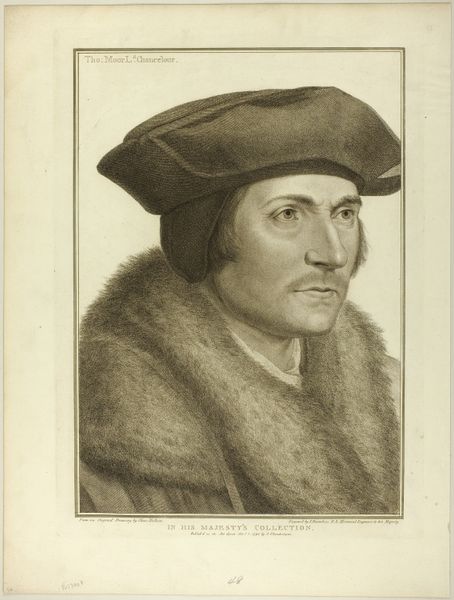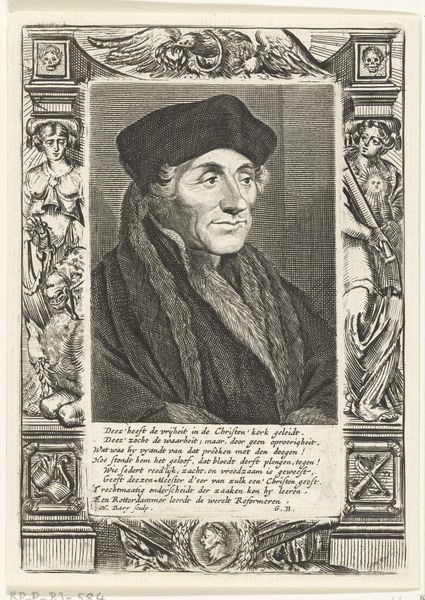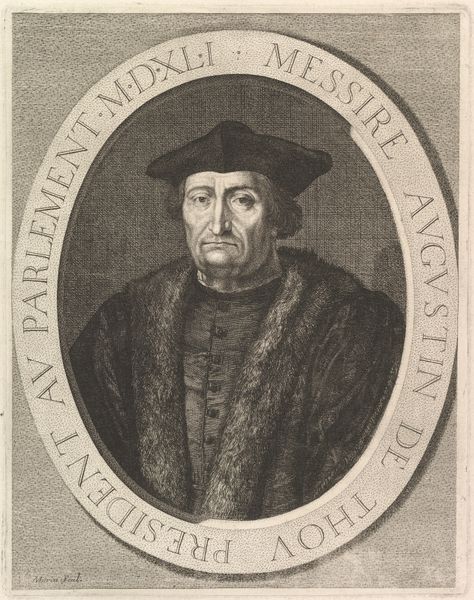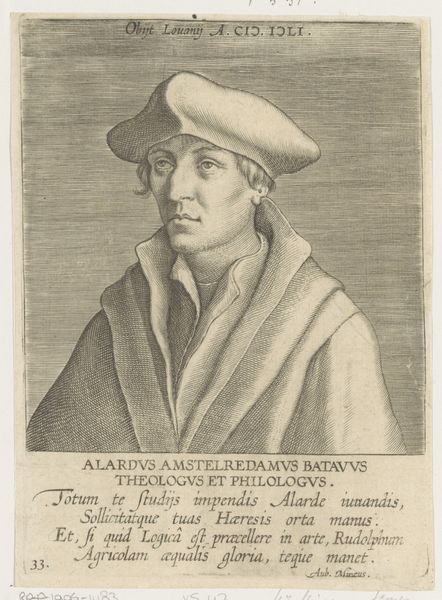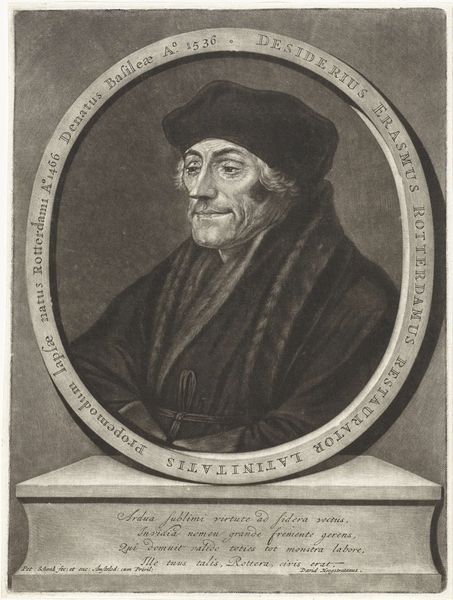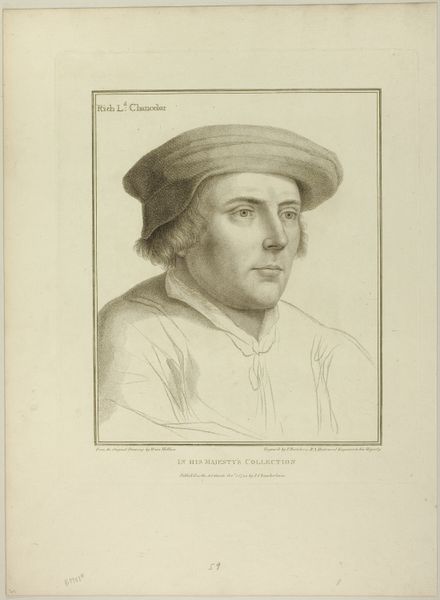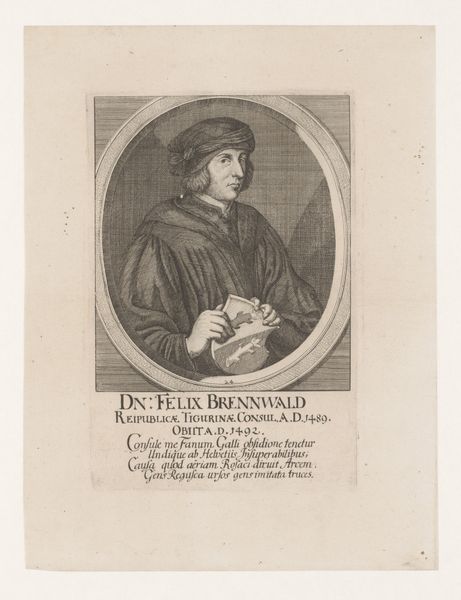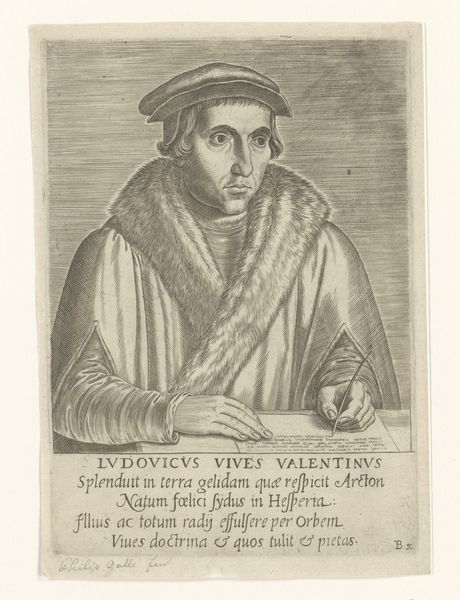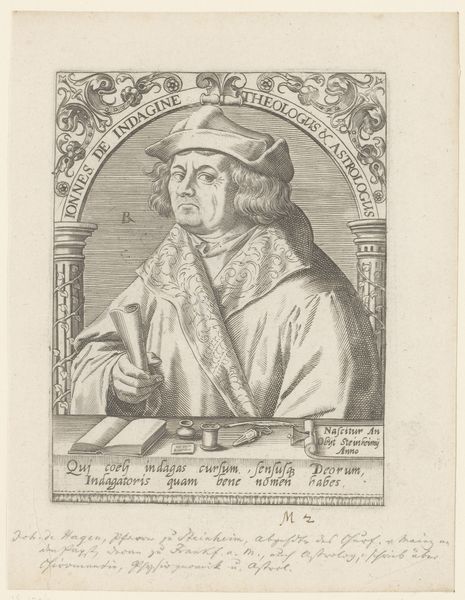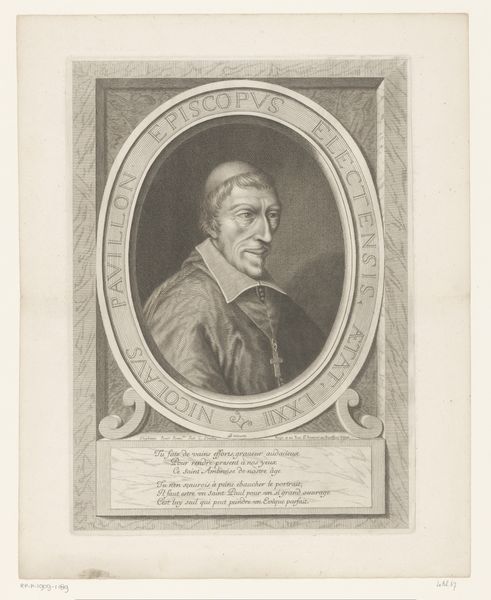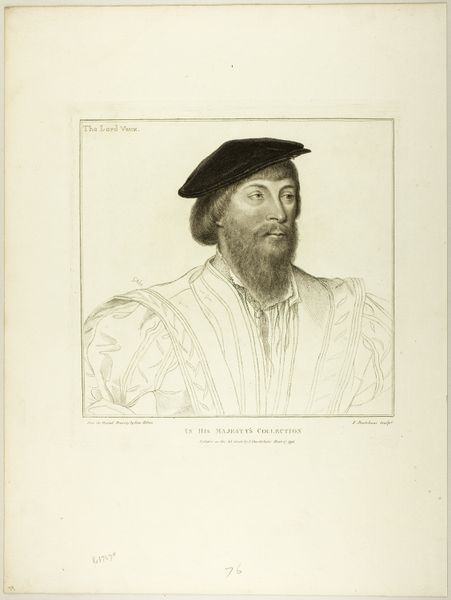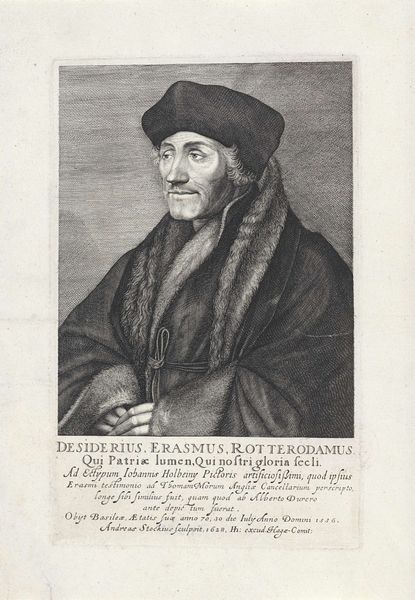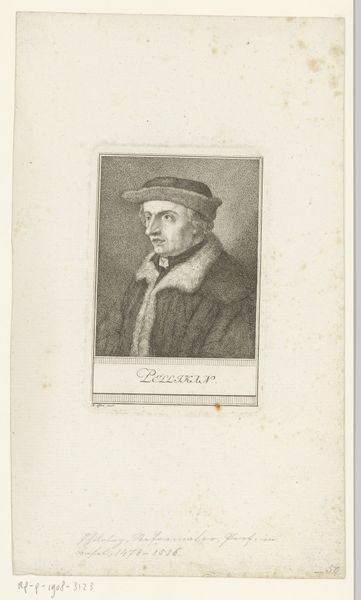
drawing, print, paper, engraving
#
portrait
#
drawing
#
neoclacissism
# print
#
paper
#
history-painting
#
engraving
Dimensions: 377 × 285 mm (Image); 428 × 324 mm (plate); 540 × 401 mm (sheet)
Copyright: Public Domain
Curator: Welcome. We’re standing before an engraving of Sir John Godsalve, created by Francesco Bartolozzi in 1796. It’s currently held here at The Art Institute of Chicago. Editor: You know, the first thing that strikes me is the directness of his gaze. He really seems to be taking you in. A little… calculating, maybe? I wonder what secrets that fur stole is hiding? Curator: Bartolozzi was a key figure in popularizing Neoclassical style in Britain through his prints. What you're seeing is a deliberate move towards portraying subjects with a kind of classical gravitas, emphasizing simplicity and virtue. The fact it’s a print also makes it accessible. This wasn't just for the aristocracy. Editor: Gravitas, alright, I see what you mean. It does remind me of some busts I saw in Rome, stoic fellas and all, except John is really bundled up. It's also that severe expression juxtaposed with the softer medium. Like the world just can’t crack his hard shell. Curator: The print itself is a historical artifact, showcasing the tastes of its time. Sir John lived much earlier, of course; this would be an effort to connect the patrons of 1796 with what was seen as an esteemed heritage. Making them both figures in a continued march of history. Editor: It's funny how styles recycle, isn’t it? Makes me think how my grandpa tried wearing hats like that in the 70s. What was old is new… until it’s hopelessly outdated again, which happens quickly if my old family photos are anything to go by. But with that being said, what do you think ol’ John over here wanted to communicate? Do you reckon the print actually captured his soul or was it some political propaganda? Curator: It’s difficult to know definitively about “souls”, isn't it? What we do know is that imagery of this kind served very specific purposes. Prints were tools for creating a national narrative. Portraits like these often served to legitimize the status and importance of those represented. In a time of global power games, projecting strength was crucial. Editor: It all boils down to storytelling doesn't it? The question is, do we believe the tale being told? And hey, it’s nice to feel something when staring at an old piece of paper! Curator: Indeed. These works are always more than what they immediately appear to be. Thank you for considering Bartolozzi's work with us today. Editor: Thank you all for listening, I had a blast.
Comments
No comments
Be the first to comment and join the conversation on the ultimate creative platform.
